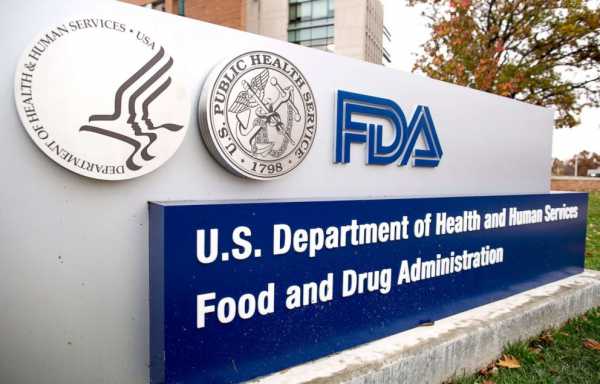
The lead researcher on the team, Dr. Teresa Purzner has already beat impossible odds. The neurosurgeon and mom of three managed to get the approval in record time and with little money thanks to the help of a team of ‘scientific altruists’ called SPARK.
(MORE: In U.S., Prescription Drug Abuse Is Growing)
The development of new medications in the United States is driven by pharmaceutical companies; researchers at universities rarely bring their discoveries to the bedside. For every 10,000 potential new medicines sitting on laboratory shelves around the country, only one will ever reach patients in need, according to the National Institutes of Health. Why? Because the process can take 10 to 15 years, costing upwards of a billion dollars per drug.
(MORE: Researchers say poliovirus may help treat brain cancer)

Al Drago/CQ Roll Call via Getty Images, FILEThe exterior of the Food and Drug Administration headquarters is seen in White Oak, Md., Nov. 9, 2015.
As a result, the number of new medications approved by the FDA has remained stagnant at about 31 per year over the past 10 years. The majority of these medications are similar to already existing ones, and many target diseases for which there are large markets — like hypertension and high cholesterol — and therefore, a return on investment.
(MORE: Genetic Mutations Linked to Deadly Brain Cancer)
Enter SPARK, a non-profit program created in partnership between Stanford University and volunteers from the biotechnology, pharmaceutical, and investment industries, which helps academic researchers bring their discoveries to patients. Since its founding, SPARK has given special consideration to projects typically neglected by pharmaceutical companies, including rare diseases and diseases affecting children.
(MORE: Scientists identify brain cancer genes)
Purzner put her neurosurgery practice on pause to study medulloblastoma, a type of childhood brain cancer. Compared to diseases like hypertension and high cholesterol, which affect millions of Americans, medulloblastoma is rare, affecting only 250 to 500 children every year.

STOCK PHOTO/Getty ImagesA variety of pills and capsules is pictured in this undated stock image.
“There’s something especially poignant about seeing children —beautiful, wonderful, innocent things — and seeing the impact of the therapies we are giving them. The medications, the radiation therapies impact their cognition, their quality of life and their ability to function as independent adults in the future,” Purzner said in an interview with ABC News.
(MORE: Tainted drugs: When medicine makes patients sicker)
Purzner had a clear goal: to find a targeted therapy that could shut down the basic biochemical pathway responsible for the development of this cancer, and she did. She tested the potential drug in mice with good results, and she just received FDA approval to test it in clinical trials, which she will do through the Pediatric Brain Tumor Consortium. She did it all in five years and for a price tag of $500,000.
“To get from my initial findings in the lab to the point where the Pediatric Brain Tumor Consortium picked it up for clinical trials would have never happened without the help of SPARK… they gave me a clear pathway and made me believe it was possible,” said Purzner.
(MORE: Active Ingredient in Marijuana Kills Brain Cancer Cells)
Every year, SPARK provides 10 teams with funding and expert mentorship to promote efficient and cost-effective drug development.
“This is a case of scientific altruism, scientific advisors who donate their time… these individuals are just remarkably generous,” said Dr. Kevin Grimes, professor of chemical and systems biology at Stanford University, practicing physician, and co-director of SPARK.
For SPARK’s founder, Dr. Daria Mochly-Rosen, a professor in chemical and systems biology at Stanford, the organization’s mission is personal.
“SPARK has been the better part of my life,” Mochly-Rosen told ABC news.
(MORE: Study: 7 key genes predict brain cancer survival)

STOCK PHOTO/Getty ImagesA variety of pills and capsules is seen in this undated stock photo.
And like Purzner’s story, there are many. Sixty percent of SPARK projects have entered clinical trials or have been licensed to companies.
“SPARK addresses a black hole that neither NIH or biopharma can fill,” Dr. Roham Zamanian, associate professor of medicine and director of the Adult Pulmonary Hypertension Program at Stanford University, told ABC News. It allows researchers to move forward drugs that would otherwise have no path, addressing the high cost of drug development and bringing precision medicine to patients, explained Zamanian.
(MORE: Drug Shrinks Some Brain Tumors)
Zamanian’s own drug for the treatment of a rare lung disease, known as pulmonary hypertension, will be tested in a global clinical trial this year.
SPARK’s model has been replicated at 12 academic institutions around the world.
“It might be one way to have an impact on the health care cost crisis,” Zamanian said, “while bringing precision and personalized medicine that maximizes benefits and decreases toxicity for patients.”
(MORE: Vaccine May Boost Survival of Brain Cancer Patients)
Sourse: abcnews.go.com
0.00 (0%) 0 votes


































